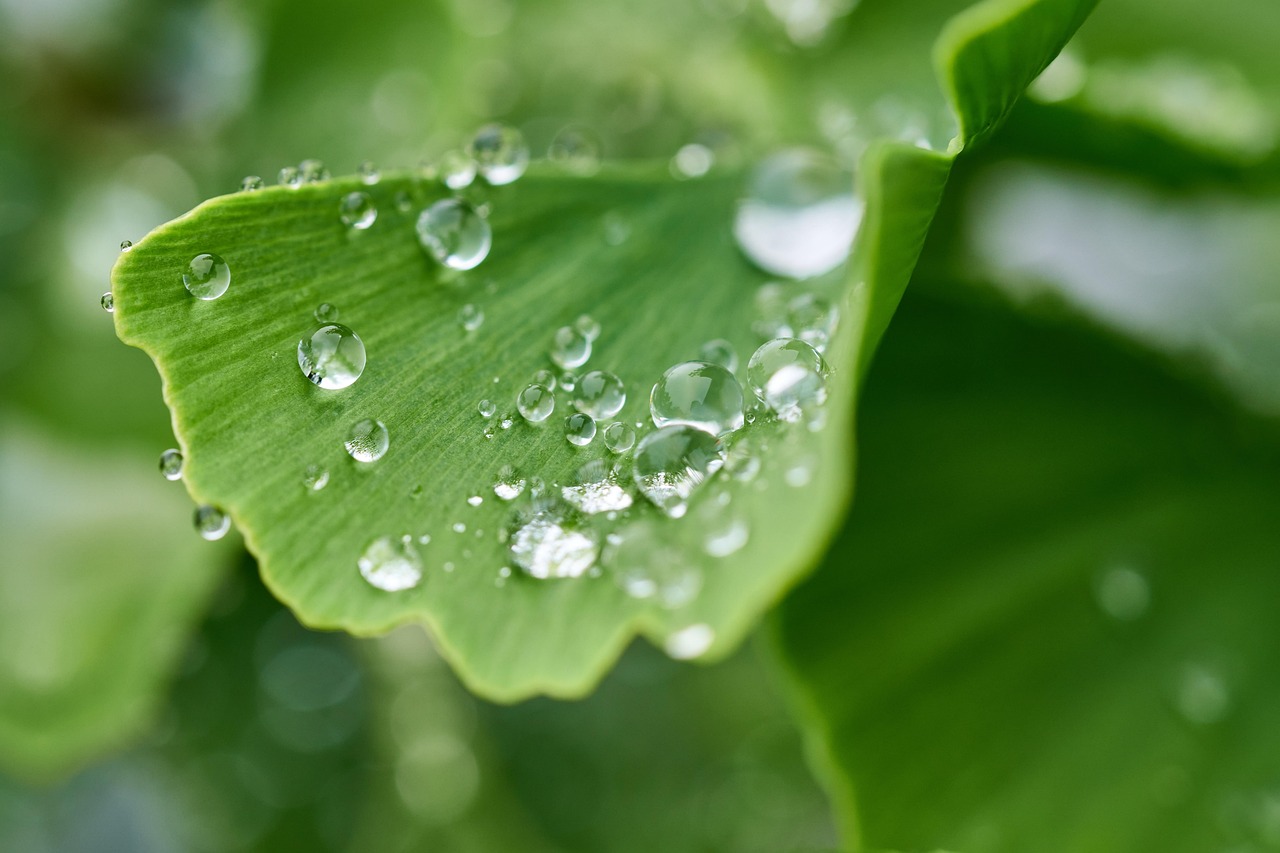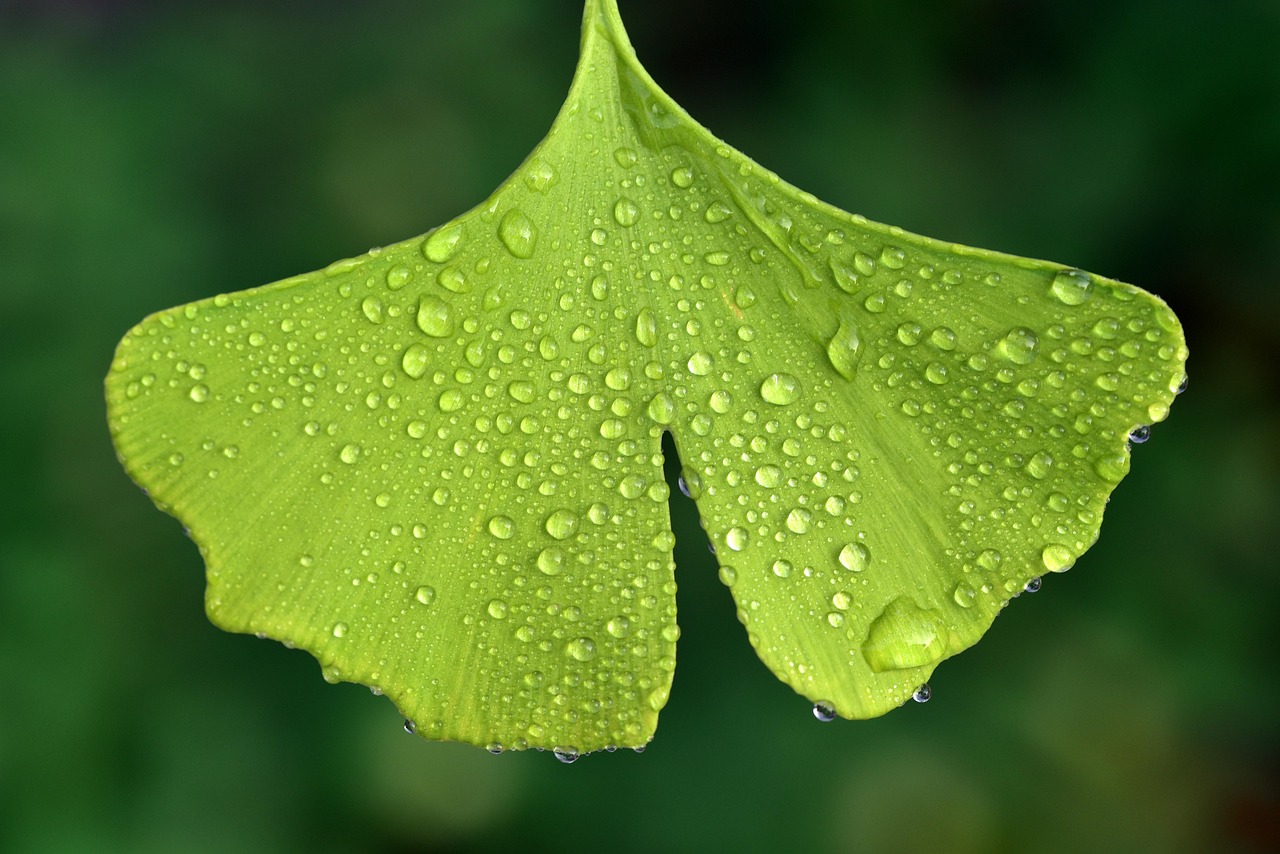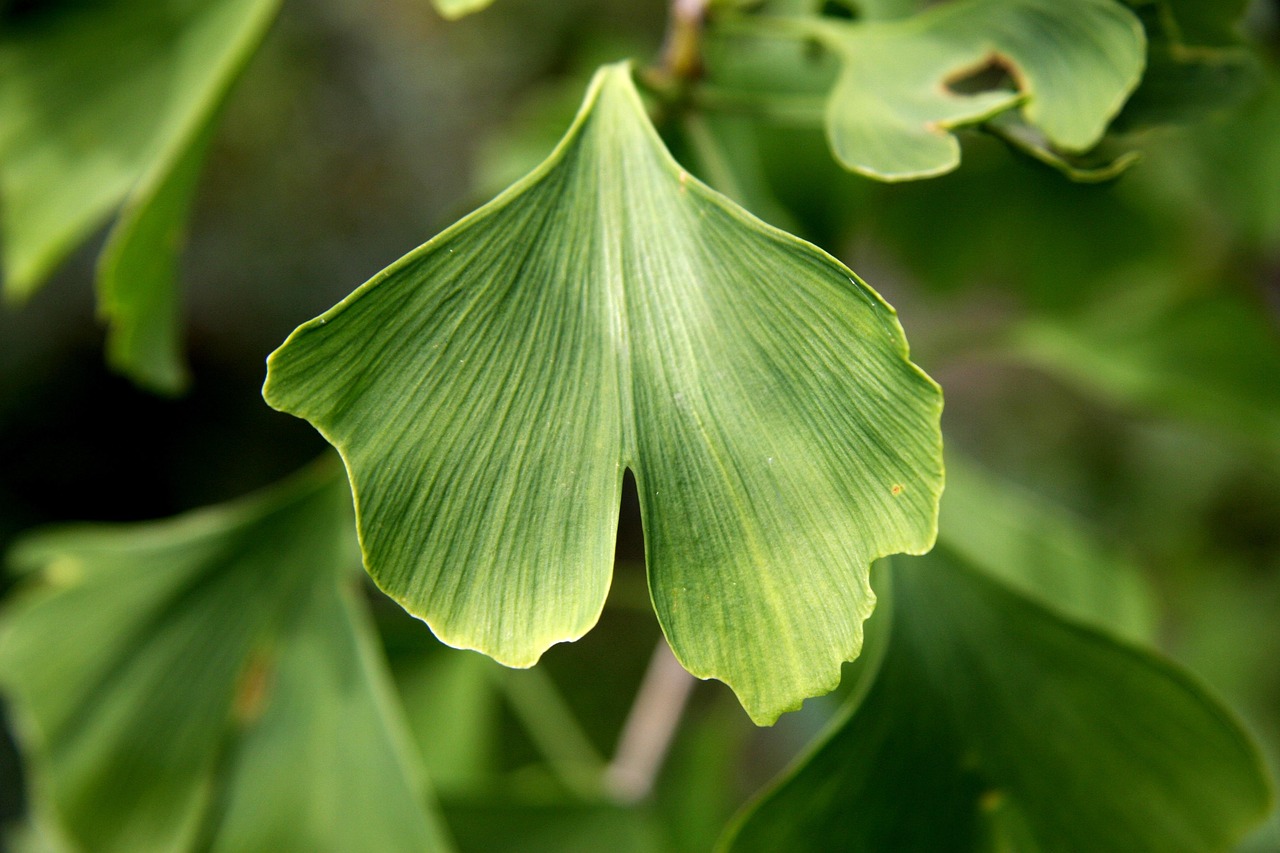The Ginkgo Biloba tree has a moderate growth rate, typically ranging from 1 to 2 feet per year under ideal conditions. This unique tree can reach maturity in 20 to 30 years, making it a valuable addition to medicinal gardens for its health benefits.
Ginkgo Biloba, often referred to simply as ginkgo, is one of the oldest living tree species in the world. Known for its distinctive fan-shaped leaves and resilience, this tree has been cultivated for thousands of years. Native to China, it is now grown worldwide for both its ornamental value and its medicinal properties. The leaves of the Ginkgo Biloba tree are rich in flavonoids and terpenoids, which are believed to have antioxidant effects. As a result, many gardeners and herbalists cultivate this tree to harness its potential health benefits.

In terms of growth conditions, Ginkgo Biloba trees thrive in a variety of environments. They are adaptable to different soil types, though they prefer well-drained soils that are slightly acidic to neutral. These trees also tolerate urban pollution and can withstand drought, making them an excellent choice for city gardens. Additionally, they are resistant to many pests and diseases, further enhancing their appeal as a low-maintenance plant.
Growth Characteristics of Ginkgo Biloba
The growth characteristics of the Ginkgo Biloba tree are noteworthy. Understanding these can help gardeners and landscapers plan effectively for their medicinal gardens. Below are some key growth characteristics:
- Height: Ginkgo trees can grow between 50 to 80 feet tall, depending on the variety and growing conditions.
- Spread: The canopy can spread 30 to 40 feet wide, providing considerable shade.
- Growth Rate: Generally grows 1 to 2 feet per year.
- Lifespan: They can live for over 1,000 years, making them one of the longest-living tree species.
When planting Ginkgo Biloba trees in a medicinal garden, it is essential to consider their growth rate and size. This information helps ensure that they have enough space to thrive without overcrowding other plants. Proper spacing allows for good air circulation and sunlight exposure, which are vital for healthy growth.

Optimal Conditions for Growth
To achieve the best growth rate and overall health of Ginkgo Biloba trees, certain conditions should be met. Here are some optimal growth conditions:
| Condition | Ideal Range |
|---|---|
| Soil Type | Well-drained, slightly acidic to neutral |
| Sunlight | Full sun (6-8 hours per day) |
| Watering | Moderate; allow soil to dry between watering |
| Temperature | Tolerates a wide range; optimal between 60°F – 75°F |
In addition to these conditions, Ginkgo Biloba trees benefit from regular pruning. This practice helps maintain their shape and removes any dead or diseased limbs. Pruning is best done in late winter or early spring before new growth begins.
Another important factor in the growth of Ginkgo trees is their ability to adapt to different climates. They can thrive in USDA Hardiness Zones 3 through 8, which covers a significant portion of the United States. This adaptability makes them suitable for a variety of gardening projects, including those focused on medicinal plants.

Growing Ginkgo Biloba trees not only contributes to the aesthetic appeal of a garden but also provides access to its medicinal properties. As interest in natural remedies continues to rise, these trees serve as a valuable resource for herbalists and health enthusiasts alike.
Medicinal Uses of Ginkgo Biloba
The Ginkgo Biloba tree is not only valued for its unique appearance but also for its numerous medicinal properties. Its leaves have been used in traditional medicine for centuries, particularly in Chinese herbal practices. Modern research has begun to validate some of these traditional uses, shedding light on the potential health benefits of this remarkable tree.
Key Health Benefits
Ginkgo Biloba is often utilized for various health conditions. Some of the most notable benefits include:

- Improving Cognitive Function: Ginkgo is commonly associated with enhancing memory and cognitive processing, especially in older adults.
- Promoting Circulation: The extract may help improve blood flow, which can be beneficial for those with circulatory issues.
- Reducing Anxiety: Some studies suggest that Ginkgo may help alleviate symptoms of anxiety and promote mental well-being.
- Antioxidant Properties: The leaves contain high levels of flavonoids, which have antioxidant effects that combat oxidative stress in the body.
These benefits make Ginkgo Biloba a popular choice among individuals seeking natural remedies for cognitive and circulatory health. However, it is essential to consult with a healthcare provider before starting any new supplement regimen.
Forms of Ginkgo Biloba
Ginkgo Biloba can be consumed in various forms, allowing flexibility for those interested in its medicinal properties. Common forms include:
- Ginkgo Leaf Extract: This concentrated form is often available in capsules or liquid tinctures. It is widely used for its cognitive benefits.
- Dried Leaves: Dried Ginkgo leaves can be brewed into tea. This method retains many of the beneficial compounds found in the leaves.
- Pills/Tablets: Standardized ginkgo supplements are available in pill or tablet form, making them easy to incorporate into daily routines.
When selecting a form of Ginkgo Biloba, it is crucial to choose high-quality products from reputable sources to ensure potency and safety.
Growing Ginkgo Biloba in a Medicinal Garden
Incorporating Ginkgo Biloba trees into a medicinal garden can enhance both its aesthetic and functional value. Here are some tips for successfully growing this tree:
Planting Tips
- Site Selection: Choose a location that receives full sun and has well-drained soil.
- Spacing: Ensure ample space between Ginkgo trees and other plants to allow for their wide canopy.
- Soil Preparation: Amend the soil with organic matter to improve drainage and nutrient content.
When planting, it is ideal to do so in early spring or fall when temperatures are milder. This timing allows the tree to establish roots before facing extreme weather conditions.
Caring for Ginkgo Trees
Caring for Ginkgo trees involves regular maintenance to promote healthy growth. Here are some key care practices:
- Watering: Water regularly during dry periods, especially when the tree is young. Mature trees are more drought-resistant but still benefit from occasional watering.
- Fertilizing: Apply a balanced fertilizer in early spring to support growth. Avoid over-fertilizing, as this can harm the tree.
- Pest Management: While Ginkgo trees are resistant to many pests, regular inspections can help identify any issues early.
By following these care guidelines, gardeners can enjoy the beauty and benefits of Ginkgo Biloba while contributing to their medicinal garden’s diversity.
Harvesting Ginkgo Leaves
The leaves of the Ginkgo Biloba tree are the primary part used for medicinal purposes. Knowing how and when to harvest these leaves can maximize their potency:
Best Time to Harvest
The best time to harvest Ginkgo leaves is in late spring to early summer when they are fully developed but before they begin to fall. At this stage, the leaves contain the highest concentration of beneficial compounds.
Harvesting Process
- Tools Needed: Use clean scissors or pruning shears to prevent any contamination.
- Select Healthy Leaves: Choose leaves that are vibrant green and free from any signs of disease or damage.
- Avoid Overharvesting: Only take a portion of the leaves from each tree to ensure it continues to thrive.
The harvested leaves can be dried for later use or processed into extracts, allowing their health benefits to be enjoyed year-round.
Potential Side Effects and Precautions
While Ginkgo Biloba is widely recognized for its health benefits, it is essential to be aware of potential side effects and precautions. Understanding these aspects can help consumers use this herb safely and effectively.
Common Side Effects
Though many individuals tolerate Ginkgo Biloba well, some may experience side effects. The most commonly reported include:
- Gastrointestinal Issues: Some users report stomach upset, diarrhea, or nausea after consuming Ginkgo.
- Headaches: Mild headaches can occur, particularly when starting supplementation.
- Dizziness: A feeling of lightheadedness may be experienced in some cases.
These side effects are generally mild and often resolve on their own. However, if they persist or worsen, it is advisable to consult a healthcare professional.
Serious Risks
In rare cases, Ginkgo Biloba can cause more severe adverse reactions. These may include:
- Allergic Reactions: Some individuals may develop skin rashes or other allergic responses.
- Bleeding Disorders: Ginkgo may increase the risk of bleeding, especially in those with existing bleeding disorders or those taking anticoagulant medications.
- Interactions with Medications: Ginkgo can interact with various medications, including blood thinners, antidepressants, and anti-seizure drugs.
It is crucial for individuals considering Ginkgo Biloba to discuss their health history and any medications they are taking with a healthcare provider to avoid complications.
Using Ginkgo Biloba in Herbal Remedies
Ginkgo Biloba can be integrated into various herbal remedies and preparations. Understanding how to effectively use it can enhance its benefits.
Tinctures and Extracts
Tinctures and extracts are concentrated forms of Ginkgo that provide a potent dose of its beneficial compounds. Here’s how they can be used:
- Preparation: Ginkgo tinctures are made by soaking dried leaves in alcohol or glycerin. This process extracts the active ingredients.
- Dosing: It is essential to follow dosage instructions on the product label. Typically, a few drops taken daily can be effective.
- Storage: Store tinctures in a dark, cool place to preserve their potency.
Ginkgo Tea
Another popular way to consume Ginkgo is through tea. Here’s how to prepare it:
- Gather Ingredients: Use dried Ginkgo leaves or purchase pre-packaged Ginkgo tea bags.
- Boil Water: Heat water until it reaches a rolling boil.
- Brew the Tea: Steep the leaves or tea bag in boiling water for 5 to 10 minutes, depending on desired strength.
- Strain and Serve: If using loose leaves, strain before serving. Sweeten with honey or lemon if desired.
This simple preparation allows for an enjoyable way to experience the benefits of Ginkgo while staying hydrated.
The Role of Ginkgo in Modern Research
Research on Ginkgo Biloba has expanded significantly in recent years. Various studies have explored its potential effects on health and wellness.
Cognitive Improvement Studies
A number of clinical trials have investigated the effects of Ginkgo Biloba on cognitive function. Key findings include:
- Memory Enhancement: Some studies indicate that Ginkgo extract may improve memory and attention in older adults with cognitive decline.
- Alzheimer’s Disease Research: Research has examined Ginkgo’s potential role in delaying the progression of Alzheimer’s disease, though results have been mixed.
- Mood and Anxiety Benefits: Preliminary studies suggest that Ginkgo may help reduce symptoms of anxiety and depression.
Circulation and Cardiovascular Health
Research has also focused on Ginkgo’s effects on circulation and cardiovascular health. Important points include:
- Poor Circulation Treatment: Ginkgo is sometimes used to help treat conditions like peripheral artery disease, which affects blood flow to limbs.
- Antioxidant Effects: Its antioxidant properties may contribute to heart health by reducing oxidative stress in blood vessels.
While many studies show promise, more research is needed to confirm these findings and establish clear guidelines for Ginkgo’s use in medical settings.
Challenges and Considerations in Ginkgo Cultivation
While Ginkgo Biloba trees offer numerous benefits and can thrive in various conditions, there are challenges associated with their cultivation. Understanding these challenges can help gardeners and herbalists succeed in growing this unique tree.
Pest and Disease Management
Although Ginkgo trees are relatively resistant to pests and diseases, occasional issues can arise. Some common pests that might affect Ginkgo trees include:
- Ginkgo Leaf Blight: This fungal disease can cause yellowing of leaves and premature leaf drop. Proper spacing and air circulation can help prevent outbreaks.
- Scale Insects: These pests can attach themselves to branches and leaves, feeding on sap and weakening the tree. Regular inspection and treatment with insecticidal soap may be necessary.
- Spider Mites: These tiny pests thrive in dry conditions and may cause stippling on leaves. Increasing humidity and spraying water on affected areas can help control their population.
Regular monitoring and early intervention are crucial to managing these potential problems effectively.
Environmental Factors
Ginkgo trees are adaptable, but extreme environmental conditions can impact their growth. Consider the following factors:
- Temperature Extremes: While Ginkgo trees tolerate cold temperatures, prolonged exposure to below-freezing conditions can harm young trees. Providing mulch during winter can protect roots.
- Soil Quality: Compacted or poor-quality soil can hinder growth. Regularly amending the soil with organic matter can improve nutrient availability and drainage.
- Watering Practices: Overwatering can lead to root rot, while underwatering can stress the tree. A balanced watering schedule is essential for healthy growth.
By being mindful of these environmental factors, gardeners can maintain healthy Ginkgo Biloba trees in their medicinal gardens.
Integrating Ginkgo Biloba into a Holistic Health Approach
The inclusion of Ginkgo Biloba in medicinal gardens aligns well with a holistic approach to health. This perspective emphasizes the interconnectedness of various aspects of well-being, including physical, mental, and emotional health.
Complementary Herbs
When growing Ginkgo Biloba, consider integrating other herbs that complement its effects. Some beneficial companion plants include:
- Ginseng: Known for its energy-boosting properties, ginseng pairs well with Ginkgo for cognitive support.
- Lemon Balm: This herb offers calming properties that may enhance the anxiety-reducing effects of Ginkgo.
- Turmeric: With its anti-inflammatory benefits, turmeric can provide additional support for overall health when used alongside Ginkgo.
Creating a diverse medicinal garden with these complementary herbs can enhance the overall therapeutic value of the space.
Final Thoughts
The Ginkgo Biloba tree stands out as a remarkable plant with a rich history of medicinal use. Its moderate growth rate, adaptability, and numerous health benefits make it an excellent choice for any medicinal garden. From enhancing cognitive function to promoting circulation, the potential advantages of this tree are increasingly recognized in both traditional and modern contexts.
As interest in natural remedies continues to grow, cultivating Ginkgo Biloba offers gardeners an opportunity to contribute to personal health and wellness while creating a lush, diverse landscape. However, it is essential to be aware of potential side effects and challenges associated with its cultivation. By following best practices for growth, care, and harvesting, individuals can successfully integrate Ginkgo Biloba into their lives.
Ultimately, whether for its therapeutic properties or its striking beauty, the Ginkgo Biloba tree is a valuable addition to any garden dedicated to health and healing.
